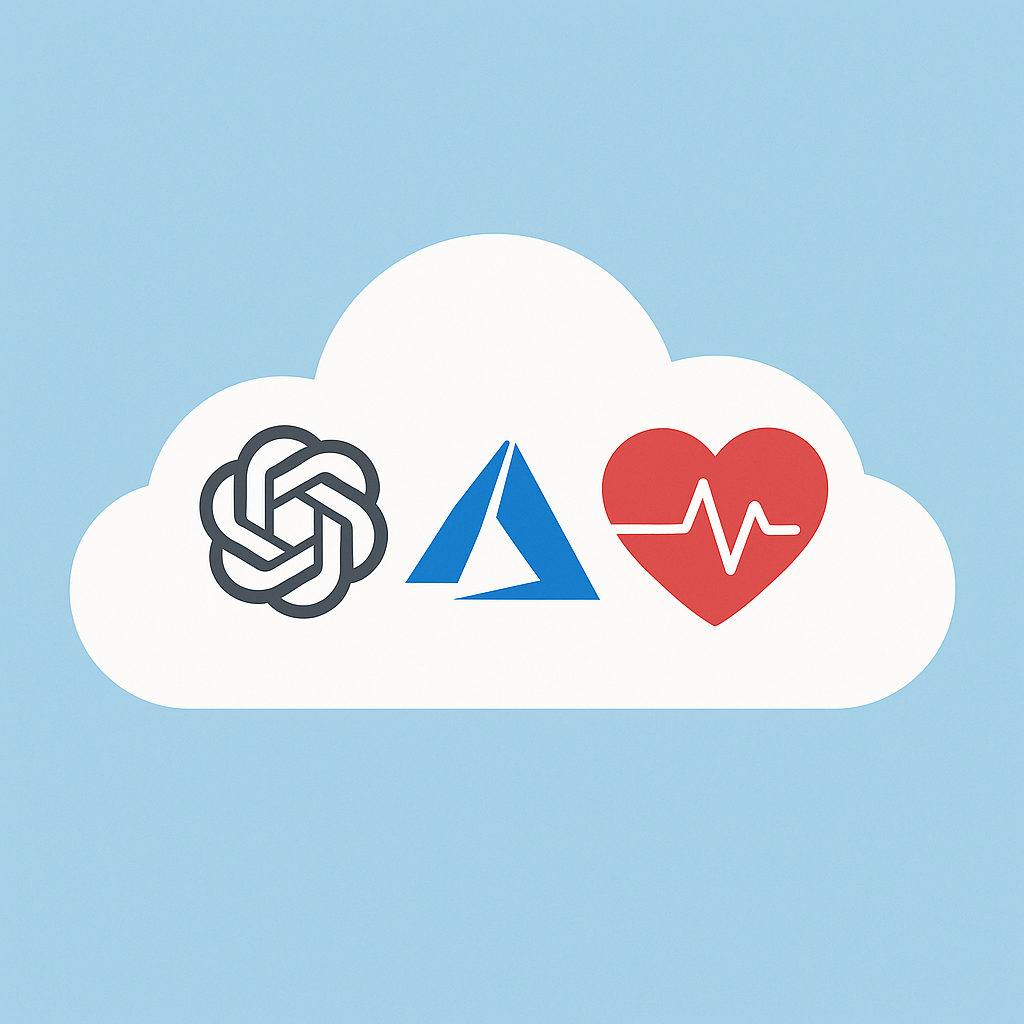Setting Up HIPAA-Compliant ChatGPT on Azure: A Simple Guide
Who this is for: Healthcare organizations that need AI assistance while protecting patient data
Time to read: 3 minutes | Setup time: 1-2 hours (mostly waiting for approvals)
What You Need to Know First
ChatGPT Enterprise can be HIPAA-compliant, but only when properly configured with Microsoft Azure. The consumer version (chatgpt.com) is never HIPAA-compliant, even if you pay for ChatGPT Plus.
Three non-negotiables:
You must use Azure OpenAI Service (not regular ChatGPT)
You need a signed Business Associate Agreement (BAA) with Microsoft
Your Azure environment must be configured correctly
Step-by-Step Setup Process
Step 1: Get the Right Azure Account
Go to azure.microsoft.com
Sign up for an Azure account (you'll need a credit card, but there's a free trial)
Important: Use your organization's email, not a personal account
Why this matters: Microsoft will only sign BAAs with verified business accounts.
Step 2: Request Access to Azure OpenAI
Navigate to: aka.ms/oai/access
Fill out the application form
Select "Healthcare" as your industry
Indicate you need HIPAA compliance
Wait time: Usually 1-2 business days for approval
Step 3: Sign the Business Associate Agreement (BAA)
This is the most critical legal step.
Once approved, contact Microsoft Support through your Azure portal
Specifically request: "Azure OpenAI Service Business Associate Agreement for HIPAA"
Microsoft will send the BAA through DocuSign or similar
Have your authorized representative (usually legal/compliance officer) sign it
Red flag: If Microsoft says you don't need a BAA, something is wrong. Don't proceed.
Step 4: Create Your Azure OpenAI Resource
Now the technical setup begins (don't worry, it's mostly clicking buttons):
In Azure Portal, click "Create a resource"
Search for "Azure OpenAI"
Click Create
Fill in the basics:
Subscription: Your Azure subscription
Resource group: Create new (name it something like "HIPAA-AI-Resources")
Region: Choose one close to you (matters for speed)
Name: Something memorable like "YourClinic-OpenAI"
Pricing tier: Standard (S0)
Click Review + Create, then Create
Wait time: 2-5 minutes for deployment
Step 5: Configure Security Settings
This is where HIPAA compliance actually happens:
In your new Azure OpenAI resource, go to "Networking"
Select "Disabled" for public network access (or configure specific IP ranges if your team needs remote access)
Go to "Identity" section
Turn on "System assigned managed identity"
Go to "Data & Privacy" settings
Confirm:
Data is NOT used for model training ✓
Data stays in your selected region ✓
Logging is enabled for audit trails ✓
Step 6: Deploy the ChatGPT Model
Click "Model deployments" in the left menu
Click "Create new deployment"
Select model: GPT-4 or GPT-4o (most capable)
Give it a deployment name: "gpt4-hipaa"
Click Create
Congrats! Your HIPAA-compliant AI is now ready.
Step 7: Set Up User Access
Create a simple way for your team to use it:
Option A - Azure OpenAI Studio (easier):
Users access through: oai.azure.com
Add users through Azure Active Directory
They can chat directly in a secure interface
Option B - Custom Integration (requires IT help):
Have your IT team build a simple web interface
Uses your Azure OpenAI API keys
Can look/feel like regular ChatGPT
Training Your Team: The Do's and Don'ts
✅ DO:
Use it for clinical decision support
Ask about drug interactions, diagnoses, treatment options
Generate patient education materials (review before sharing)
Analyze de-identified case studies
❌ DON'T:
Ever paste full names with medical information
Include dates of birth, medical record numbers
Copy/paste entire patient charts
Use it for final clinical decisions without verification
Best practice: Train on hypothetical patients: "68-year-old with diabetes and hypertension presents with..."
Maintenance & Compliance
Monthly checklist:
Review access logs (who's using it?)
Verify BAA is still in effect
Check for any Azure security alerts
Document AI usage in compliance records
Annual requirements:
Renew BAA with Microsoft if needed
Update your HIPAA risk assessment to include AI usage
Review and update staff training
Costs to Expect
Azure OpenAI Service: Pay-per-use (roughly $0.01-0.06 per 1,000 tokens)
Typical small practice: $50-200/month
Typical medium practice: $200-800/month
Pro tip: Set up budget alerts in Azure to avoid surprises
When to Call for Help
Contact an IT professional or consultant if:
You can't complete the BAA signing process
You're unsure about network security settings
You need to integrate with your EMR system
Your organization handles 500+ patients daily
Quick Troubleshooting
"I can't find Azure OpenAI in the portal" → Your access request may still be pending. Check your email for approval.
"It says my BAA isn't on file" → Contact Microsoft support immediately. Don't use the service until resolved.
"My team is using regular ChatGPT instead" → Block chatgpt.com at your network firewall and provide clear guidance on the approved Azure version only.
Remember: HIPAA compliance is ongoing, not a one-time setup. When in doubt, consult your compliance officer.
Questions? Microsoft has HIPAA-specific support: Azure Compliance Documentation


